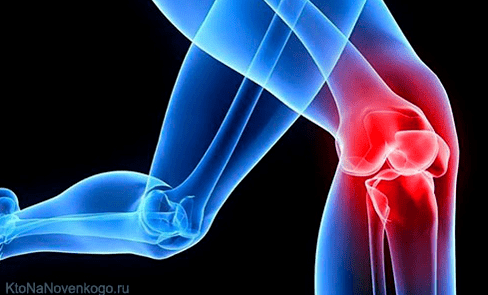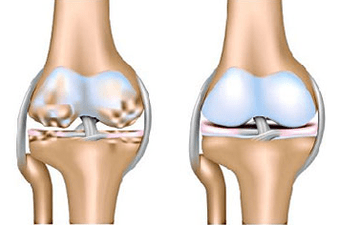From the ancient Greek "arthrosis" is a common disease ("Arthr-"-joint, "-osis" -isase). Sometimes it is also called osteoarthrosis or deformity of osteoarthrosis (from ancient "osteon" - bone).
It will be wrong to call arthrosis the disease - this is the name of a whole group of states, which includes many diagnoses.
Any disease of any joint, regardless of the cause, can be called arthrosis, but it will not give anything to the doctor or patient: the word "arthrosis" is not associated with the cause of the disease, or with treatment, but only with some symptoms.
The word "arthrosis" is very similar to another term - "this is arthritis". They both describe the damage to the joints, often both associated with pain in the joints, but have significant differences.

Typically, arthritis is a disease associated with inflammation in the joint: infection, hereditary or autoimmune disease lead to the onset of arthritis. Its main manifestations include pain, color change, swelling in the area of the inflamed joint.
With arthrosis, manifestations are less noticeable, and the causes are completely different.
How the Union Work (Knee and Others)
The musculoskeletal system needs a person for active space movement. The bones are a rigid frame, the muscles - their driving strength and the joints - the site of the bone cellular connection.
In the joint structure there are always two ends of the neighboring bone that can move compared to each other with the help of muscles, and a small gap between them. This articular gap is filled with a special lubricant - synovial fluid. It is necessary for cartilage feeding: there is no boat inside it, so it receives all the nutrients from Synovia.
The articular end of each bone is covered with cartilage to protect the bone tissue from friction. Jump also helps to "extinguish" vibration and a sharp mechanical load: for example, the knee and foot joints during walking receive most of the energy from the foot to the ground.
Restoring these cartilage is a long and complex process that does not always end successfully.
All joints are limited by a capsule - a film that holds the articular fluid, does not allow it to spread. Almost all nodes are supported by ligaments that do not allow neighboring bones to move too much and in the wrong direction.
Why and how arthritis develops
There are many reasons for the onset of arthrosis, in some cases it is a combination of factors, and it is sometimes impossible to determine the cause.
There are three main causes and more than an additional dozen. Most popular:
The development of osteoarthritis is divided into three stages:
First, the cartilage structure is disturbed: thickens due to a change in the composition of synovia or for another reason. Ellingance of the cartilage fabric exacerbates its food, so over time the cartilage begins to become thinner.
Then, in the most loaded parts of the joint, the cartilage almost disappears or becomes very tight. As a return, bone growth begins - the emergence of osteophytes (bone points).
At the end of the disease, bone growth is so pronounced that it limits movement to ankylosis - complete union immobility.
Symptoms of arthrosis
Initial manifestations: periodic pain after important physical activity. Then the morning rigidity joins - after waking up for a few minutes (up to 30), the knot seems to be connected to an elastic bandage: movements are possible but difficult.
Later symptoms:
Most often, arthritis is a disease of large legs (knee, hip) and hands (shoulder). Foot connections are less common.
The degenerative processes in the joint can still appear in the form of unusual sounds during movement: cramping, cracking, shock.
Troubleshooting
As in the case of any other illness, it begins with the collection of an anamnesis - the history of the disease.
Especilly, especially important for the doctor to find out if there was the presence of risk factors (injuries, arthritis, congenital defects, chronic illnesses).
After chatting and inspection of the merger, additional methods will be needed: instrumental tests and examination.

The main study in the diagnosis of arthrosis is radiography.
Photography will clearly see the main changes in union: lowering the joint gap, bone growth, deformation. In the initial stages, small osteophytes can be seen along the edge of the joint, and ultimately uneven bone along the entire joint gap will be noticeably.
Ultrasound examination (ultrasound) is an additional method that will help determine the thickness of the cartilage at the earliest stages of arthrosis. Arthroscopy is less common: a surgeon places a small camera directly on the joint gap and gets the cartilage image.
The treatment of arthrosis
It is impossible to fully cure arthritis and turn the knot to the original state. The exact combination of some methods will only slow down the development of osteoarthritis, but "to return previous young people" will not work.
The main tasks of treating osteoarthrosis of the knee or hip node:
With the arthrosis of the shoulder joint or other localization, the principles do not change, except the load correction in the specific node.
Physical activity and exercises are selected in each case with an orthopedist-traumatologist by a physician. The diet usually includes enriching the diet with unsaturated fatty acids, a variety of proteins, average carbohydrates (especially simple ones, they are "fast").
Rejecting bad habits (smoking, alcohol intake in any amount) significantly slows the development of arthrosis. The diet also depends on the cause of the disease, chronic diseases. You do not need to get dietary supplements.
Drug therapy - sedative sedatives. Of NSAIDs -non -inflammatory non -steroidal anti -inflammatory milaches are most often used. The choice of adaptation depends on the presence of chronic diseases and the planned duration of administration. The least used are corticosteoids (glucocorticoids, steroid drugs).
Very often, doctors prescribe chondroprotectors - medicines that contain some of the molecules important for cartilage. In the vast majority of cases, such medicines have no effect on the union, especially tablets and ointments.
Extremely is extremely rare that such medicines can really be necessary and give a real effect: when you examine intra -articular fluid, you can control their quantity, and with a lack directly injected into the joint (intra -articular injection).
conclusions
Arthrosis is a degenerative joint disease associated with mechanical cartilage damage and bone tissue growth. It usually develops in people over 50, after joint injuries or a long -term overload.
It is manifested by the pain after load, the hardness of the morning and the cramp.
























